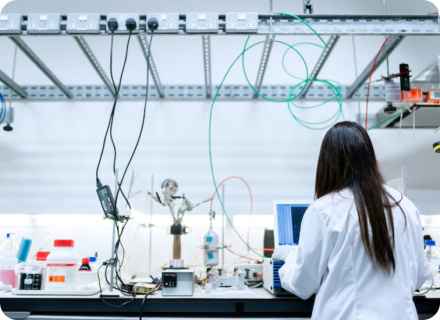CDC: Stop the Virus With a Gold Standard 14 Day Isolation
WHN Response to: CDC Dec. 27, 2021, Isolation Recommendation
Signed by National Nurses United
In response to the revised CDC Update that reduced SARS-COV2 positive individuals’ isolation time to 5 days, the World Health Network, guided by the scientific advice of the Covid Action Group, makes the following recommendations for revision*:
World Health Network Gold Standard for Isolation Recommendation
- Following a SARS-CoV-2 positive test (antigen or PCR) an individual completes a minimum of a 14-day** isolation
- Isolation ends when both of the following conditions are met***:
- No symptoms for three days
- Two sequential negative PCR tests spaced 24-hours apart (each test should include samples taken from two sources).
- Federal or state coverage of lost wages to support the absence.
- After release from isolation, the individual continues to follow preventive guidelines including getting vaccinated, wearing a high quality mask, and avoiding meeting others indoors.
The above gold standard provides strong assurance that SARS-COV2 transmission will not take place from identified cases.
The CDC’s changed recommendation for isolation of 5 days has not been justified based upon scientific analysis of the prevention of transmission, but rather on employer staffing needs due to substantial numbers of infected individuals. A recent study makes clear that even with only a few samples, a signature of infectiousness—the ability to culture viable virus—can be found in Omicron cases up to 9 days after infection [1], and evidence of infectiousness in an Omicron patient has been cited at up to 12 days [2]. Moreover, the idea that such an isolation would enable workers to support economic activity is undermined by outbreaks in the workplace, infection of service customers and housemates, and others encountering those who stop isolation prematurely. Rejection of the reduction to a 5 day isolation standard by individuals, institutions and corporations is essential to control infections.
* Please note that this recommendation is notably intended for local public health officials in the United States as well as globally who consider using the aforementioned CDC’s recommendation without adapting it to their context and the latest scientific knowledge.
** There is some but very limited scientific evidence for a reduction from 14 days to not less than 10 days of isolation. Our review of the studies often cited for a 10 day isolation [3], indicates very few relevant studies with poor statistics as well as evidence of longer periods of infectiousness. Thus, we recommend a 14 day gold standard isolation period. Where a reduction to 12 or 10 days is proposed, additional careful monitoring and guidelines for precaution should be adopted.
*** Where individuals have symptoms or positive PCR tests that do not resolve for extended times, medical evaluation of their condition is necessary.
[1] Active epidemiological investigation on SARS-CoV-2 infection caused by Omicron variant (Pango lineage B.1.1.529) in Japan: preliminary report on infectious period, National Institute of Infectious Diseases Disease Control and Prevention Center, National Center for Global Health and Medicine, https://www.niid.go.jp/niid/en/2019-ncov-e/10884-covid19-66-en.html
[2] Taiwan rejects US CDC guidance on 5-day quarantine, identifies Omicron infected individual who is infectious at 12 days: https://www.taiwannews.com.tw/en/news/4393548
[3] Analysis of infectious period literature (below)
Scientific Explanation
A recent controversial reduction in the recommended period of isolation by the CDC to 5 days and no-test exit criteria have resulted in many symptomatic individuals exiting isolation prematurely and returning to the workplace. This has raised concerns about both the absence of a scientific basis, and the lack of motivation to protect individuals and institutions. There is no scientific study that has justified a reduction to the 5 day CDC policy.
Here we review the literature about infectious periods and show that it provides sound justification for a 14 day isolation policy with a multiple test exit condition. There are several scientific studies supporting a reduction to no less than 10 days. We review this literature and conclude that the reduction to 10 days is weakly justified due to limited samples and poor statistics. Our conclusion is that the gold standard should be a 14 day isolation period. We note, however, that whether a 14 day, 12 day or 10 day minimum isolation period is adopted, it is essential to reject the 5 day isolation period.
Measures of infectivity include detection of the presence of virus as measured by PCR or antigen tests, with PCR or other nucleic acid tests being the best standard. Reviews of the literature primarily for the original variant indicate that the typical time from positive to negative tests is 14 days, with an extended tail of the distribution to longer times [1-3]. More precisely, the estimated mean time from symptom onset to two negative RT-PCR tests was 13.4 days (95% CI 10.9 to 15.8). Estimated mean duration from symptom onset to hospital discharge or death (potential maximal infectious period) was 18.1 days (95% CI 15.1 to 21.0); time to discharge was on average 4 days shorter than time to death, which provides a consistent estimate for the expected mean of 14 days of infectiousness. The long tail of positive tests is manifest in many reports of individuals manifesting symptoms of disease and of serial positive tests extending to over 20 days of infectiousness [1,4]. Noting the 95% upper bound of confidence intervals of the expected mean time at roughly 16 and 21 days, and the extended tail of infectiousness for some individuals as well as continued positive tests, the 14 days is a conservative value for isolation periods.
Indeed, since this is only a typical value, individual infectiousness must be evaluated through testing before exit from isolation. The need for two negative tests and two different sampling sources separated by 24 hours results from stochastic viral densities, i.e., randomness in their presence at any particular time, so test results are stochastic as well. The false negative rates of RT-PCR are approximately 30%, and this is higher for lower viral densities, necessitating multiple tests with different samples [5,6].
It has been argued in the literature that infectiousness decreases toward the end of the period of time of positive PCR tests due to the existence of non-viable fragments of virus rather than viable virus [7,8]. This has been used to justify reducing the isolation period to a minimum of 10 days and that testing should not be used as a criterion for release from isolation. The degree to which this reduction from 14 days to 10 days occurs reliably across the population has not been empirically shown, with very few samples reported in the literature between 10 and 14 days (9 mild cases from which 9 samples were taken with a low probability of detecting viable virus in samples even during the known infectious period in Ref. [7], 6 or 7 samples of which only one was taken at 10 days without any study of the reliability of virus detection during infectiousness in Ref [9], and even manuscript errors in not reporting positive tests at 14 days [see Supplement of 10]). The linkage of reduction in viability fraction to infectiousness, as an additional factor to the detection of virus by PCR, has also not been shown empirically. Indeed, a variety of observations, including of young healthy individuals with mild symptoms, show individuals can continue to consistently have viable virus or be infectious for over 20 days [1,4,11], which undermines the arguments in favor of reduction of isolation times, and surely the justification of not using an exit test. Thus, it is important both to establish a longer period of isolation than the weakly justified minimum of 10 days and to continue to use testing as an exit condition from isolation.
A 14-day isolation period should be a minimum requirement to avoid releasing individuals from isolation prematurely, particularly for the rapidly spreading Omicron variant, which is highly prone to superspreader events, and for whom the parameters of infectious periods are not established empirically and therefore may be shorter or longer. In the presence of uncertainty, the adoption of more conservative guidelines is justified. New studies should be devoted to determining the range of infectious periods for this particular variant.
References
[1] https://bmjopen.bmj.com/content/10/8/e039856.abstract
[2] https://www.medrxiv.org/content/10.1101/2020.07.28.20163873v1
[3] https://www.sciencedirect.com/science/article/pii/S0163445320304497
[4] https://www.eurosurveillance.org/content/10.2807/1560-7917.ES.2021.26.14.2001506
[5] https://www.nejm.org/doi/full/10.1056/NEJMp2015897
[6] Kucirka, L.M.; Lauer, S.A.; Laeyendecker, O.; Boon, D.; Lessler, J. Variation in false-negative rate of reverse transcriptase polymerase chain reaction–based SARS-CoV-2 tests by time since exposure. Ann. Intern. Med.2020, 173, 262–267, https://www.acpjournals.org/doi/full/10.7326/M20-1495?fbclid=IwAR0VMzQdJJeKp3a0CTjaJht-PlrdVXCtyTu2gQ8e3fVZ-EWRR9Mf1e9QttI
[7] Wölfel R, Corman VM, Guggemos W, et al. Virological assessment of hospitalized patients with COVID-2019. Nature. 2020/05/01 2020;581(7809):465-469. doi:10.1038/s41586-020-2196-x
[8] https://www.cdc.gov/coronavirus/2019-ncov/hcp/duration-isolation.html
[9] Owusu D, Pomeroy MA, Lewis NM, et al. Persistent SARS-CoV-2 RNA Shedding Without Evidence of Infectiousness: A Cohort Study of Individuals With COVID-19. The Journal of Infectious Diseases. 2021; doi: 10.1093/infdis/jiab107
[10] Arons MM, Hatfield KM, Reddy SC, et al. Presymptomatic SARS-CoV-2 Infections and Transmission in a Skilled Nursing Facility. New England Journal of Medicine. 2020; 382(22): 2081-2090. doi: 10.1056/NEJMoa2008457
[11] Liu W-D, Chang S-Y, Wang J-T, et al. Prolonged virus shedding even after seroconversion in a patient with COVID-19. Journal of Infection. 2020/08/01/ 2020; 81(2):318-356. doi: https://doi.org/10.1016/j.jinf.2020.03.063


